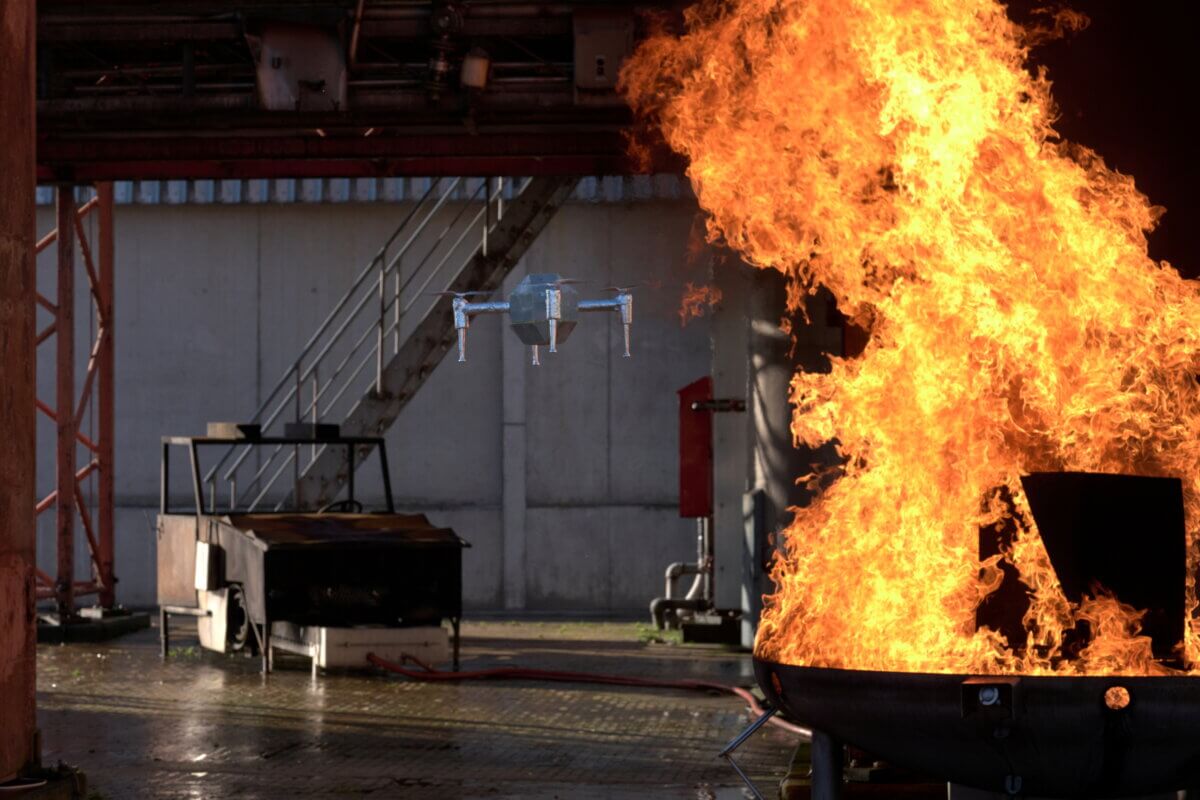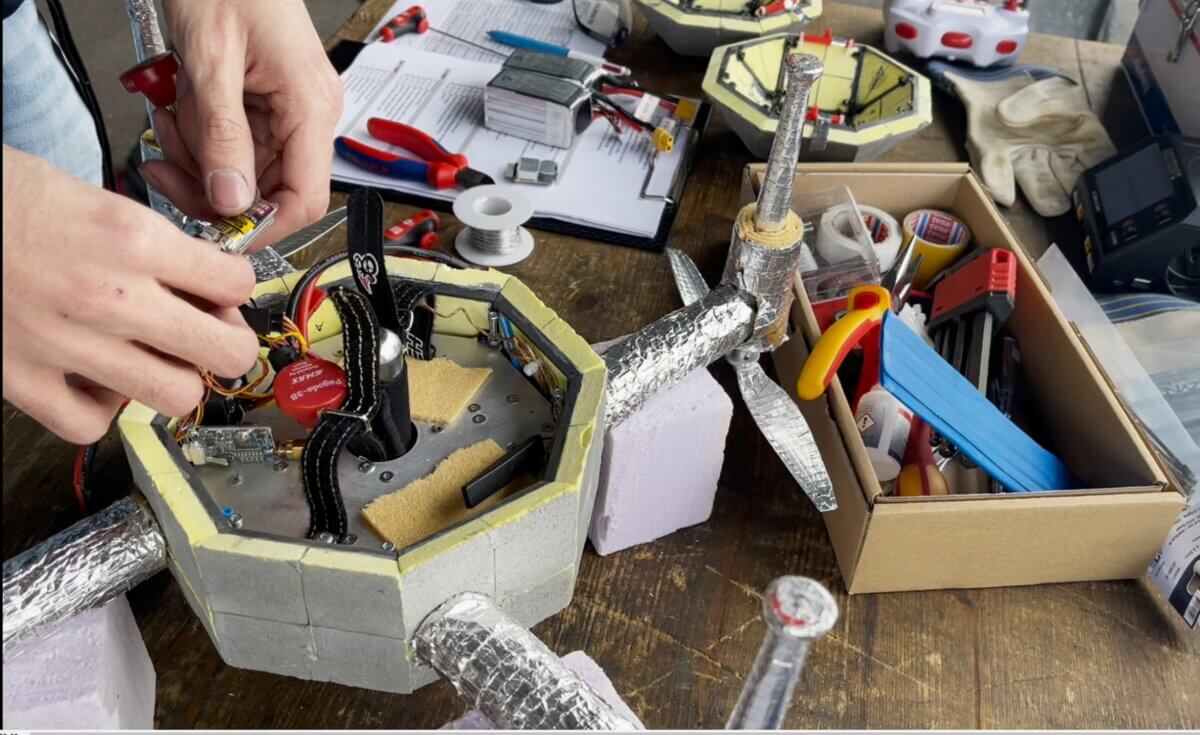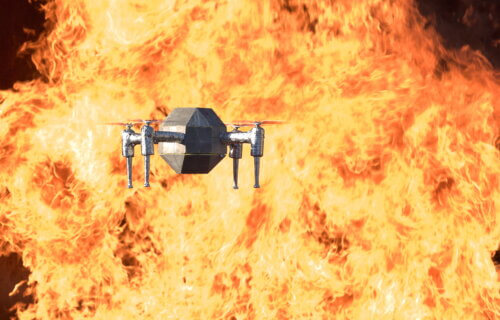DÜBENDORF, Switzerland — Researchers from Imperial College London and the Swiss research institute, Empa, are in the process of developing a heat-resistant drone that can fly into fires and potentially save lives. This drone is designed to analyze the source of danger at close range during a building or forest fires. It would provide firefighters with critical data, enabling them to devise the most effective strategies for high-risk operations before entering the danger zone.
“To fly closer, the extreme heat generated by a fire is too great for conventional drones,” says David Häusermann of Empa’s Sustainability Robotics lab. “More than aerial photos of the fire site from a safe distance are not possible with commercial drones.”
The aim of the research, therefore, was to create a drone that could withstand extreme heat and quickly provide accurate data from the heart of the fire. The “FireDrone,” as it is called, is equipped with an insulating jacket made of aerogel, enabling it to collect and transmit data from the fire scene, even under extremely hot conditions.

“Where others rush out, they have to go in: Firefighters put themselves in dangerous situations during rescue operations – sometimes right in the midst of a sea of flames. Since temperatures in a burning building can reach lethal levels of around 1,000 degrees Celsius, it is essential to avoid any unnecessary risk. Flying robots could support such missions,” Empa explains in a media release.
“Before they go directly into the danger zone, the firefighters naturally don’t know what exactly awaits them and what difficulties they will encounter,” says Mirko Kovac, head of Empa’s Sustainability Robotics Laboratory and the Aerial Robotics Lab at Imperial College London.
Drones equipped with cameras and carbon dioxide (CO2) sensors could provide crucial information about the distribution of fire sources, unexpected hazards, or trapped people.

While drones are already used in firefighting to take aerial photos, lift fire hoses onto skyscrapers, and drop extinguishing agents in remote areas, such tasks are only carried out at a safe distance from the fire.
David Häusermann collaborated with firefighters to understand the requirements of a drone in a fire mission. He then searched for a material to protect the core of the drone – the motors, batteries, sensors, and electronics. With the help of colleagues from Empa’s Building Energy Materials and Components Lab, led by Shanyu Zhao and Wim Malfait, he found a suitable insulating material to make the drone more fire-resistant.
In the development of the FireDrone, the researchers took inspiration from animals like penguins, arctic foxes, and spittlebugs, which survive in extreme temperatures due to layers of fat, fur, or thermoregulating material. They chose an aerogel, an ultralight material mainly consisting of air-filled pores enclosed in a thin layer of polymer substance.

Specifically, they used a polyimide-based aerogel, which is also being researched by NASA for insulating spacesuits. However, Zhao did not rely solely on polyimide to synthesize the aerogel. The final composite material comprised polyimide and silica, reinforced with glass fibers for added durability.
“Laboratory analyses have shown that this comparatively fire-resistant material is particularly well suited for use in drones,” says Zhao.
The researchers say the FireDrone prototype survived several test flights.
“Even after several flights, the electronics, thermal imaging camera and CO2 sensors of the FireDrone are undamaged and ready for further testing,” Häusermann reports.
A next step would now be to test the FireDrone in a fire, which, unlike the comparatively clean gas flame, shows a strong soot development.
“If a drone makes the initial reconnaissance of the situation, we don’t have to send firefighters into the danger zone immediately. For us, this progress is enormously interesting,” firefighting expert Stefan Keller concludes.
South West News Service writer Dean Murray contributed to this report.

